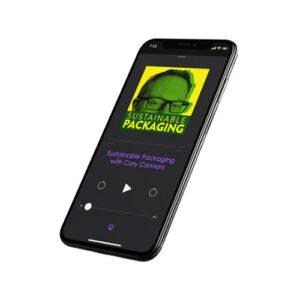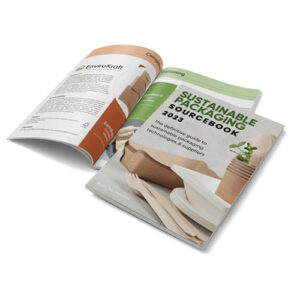Sustainable Benefits of Digital Printing
by Chris Bean
It is no secret that more and more companies are shaping strategies around sustainability – both in operations and products.Whether your strategy includes colorful e-commerce boxes, corrugated displays, or both, sustainable practices are a must. There are a lot of options when printing on corrugated and it’s important to be educated on what fits best for your business and goals. Between digital, flexographic, litho lamination, and single face lamination, each have their own benefits but when looking at high quality graphics, there are two processes that stand out – digital printing and litho lamination – but what is more sustainable?
If you’re unfamiliar with either, think of digital printing like your in-office inkjet printer and litho lamination (litho) like a printing press. Digital printing is a more modern process that takes digital art files and prints photographic quality images directly onto corrugated sheets. Whereas litho lam is an analog printing process where a series of specially manufactured plates roll press designs onto a substrate, like paper, that is then adhered to a corrugated surface after the printing process. The litho process creates more waste per sheet as additional adhesive and substrate must be utilized per print vs digital, where the graphics are printed directly on the finished sheets.
While litho lam is known for printing high-quality images, it also has high setup costs and only becomes a cost-effective choice in high volumes. In many cases, this means printing a higher volume than necessary in order to justify the setup costs – wasting time, materials, and resources, just to achieve high-quality printing. Compared to digital printing, where there is no minimum number of prints required to justify the cost – the digital design and direct to material nature of the printing process allows you to print what you need when you need it, cutting down on unnecessary waste.
In addition, since digital printing utilizes digital design files, not only do we eliminate the lead times and cost associated with the manufacturing of the plates that the litho lam process uses, but we can also reduce our overall carbon footprint associated with the plate production. Digital printing also removes the water consumption required to clean the printing plates throughout the production lifetime of that print design.
If you’ve been keeping track, digital printing is much more of a sustainable option in comparison to its competitors. Digital printing has made significant strides in sustainability and has become an increasingly popular choice for companies looking to reduce their environmental impact. With the ability to print smaller quantities, use sustainable inks, eliminate the extra costs and materials of plate manufacturing, it’s clear that digital printing is a more sustainable choice for packaging that doesn’t compromise speed, flexibility, or quality.
Related Articles

Choosing the Right Stretch Film for Your Application
Oftentimes, customers evaluate the purchase of stretch film based on the cost of the roll. But in reality, the main driver of stretch film costs is actually the cost of wrapping the pallet instead. If you have not evaluated the stretch wrapping process in your warehouse, your company could be missing out potential savings.

Cold Chain Packaging Recycling Instructions
TempSafe™ thermal packaging products are easy to recycle. The guidelines we outline below are intended for general guidance. For proper recycling requirements in your area, please consult with your local municipality for further instructions.
Want to learn more about
Sustainable Packaging?
We have created some resources to guide you in your transition to sustainable packaging:
Sustainably Packaged Magazine
Learn More >>
Sustainable Packaging Podcast With Cory Connors
Cory chats with industry leaders about sustainable packaging options, new products, and how we can improve packaging sustainability.
Sustainable Packaging Sourcebook
Register Now >>




